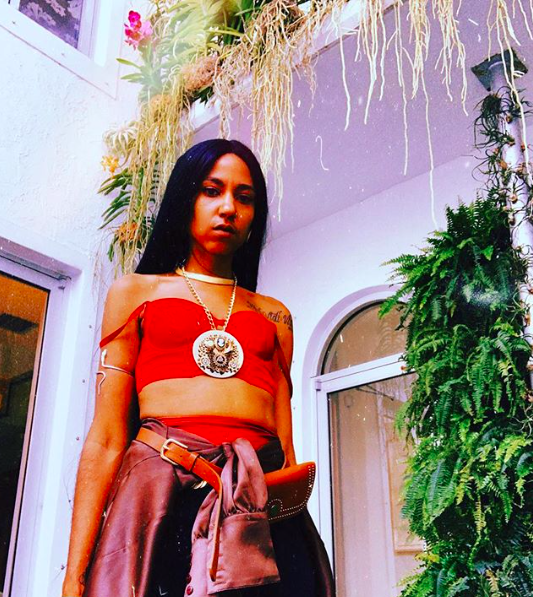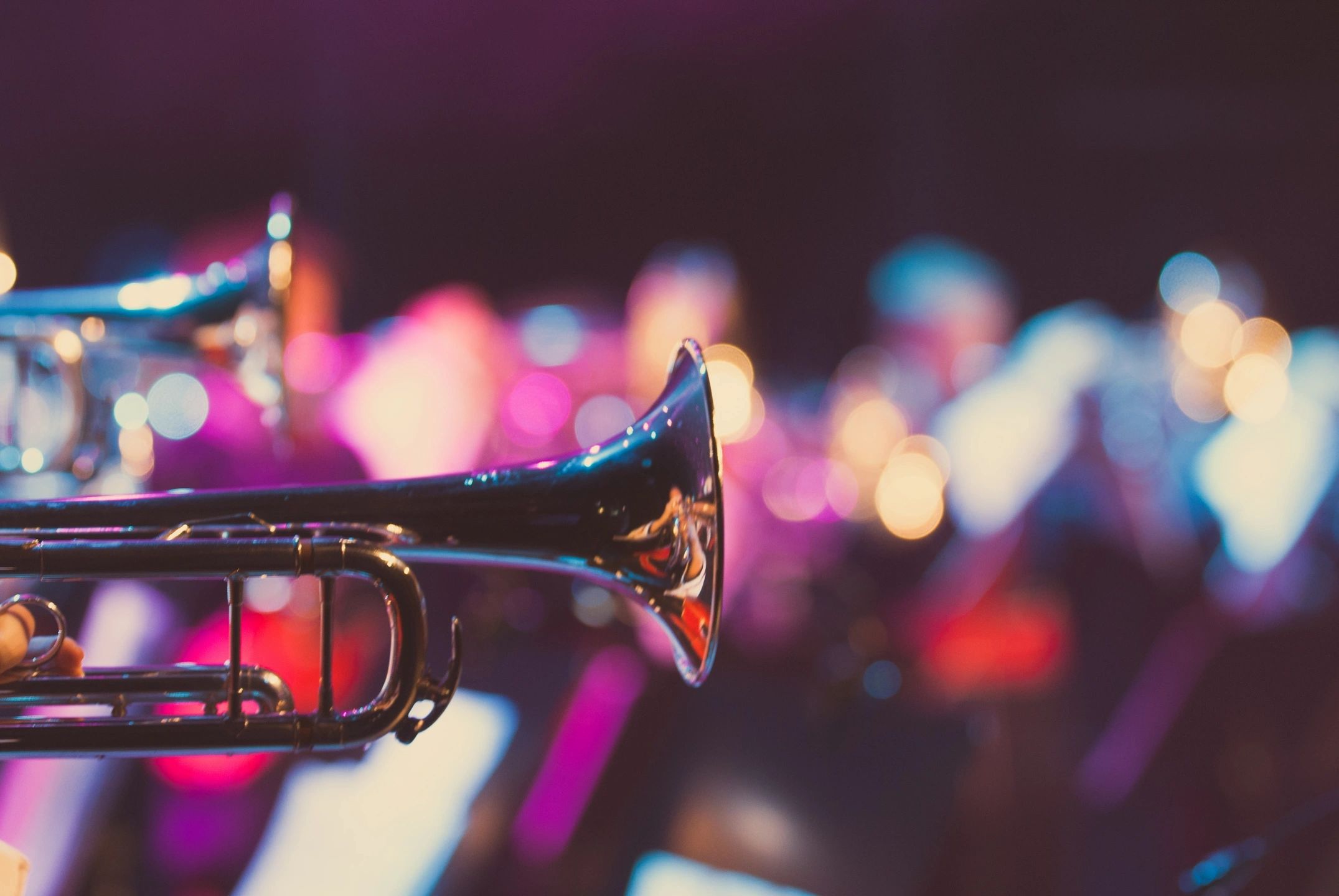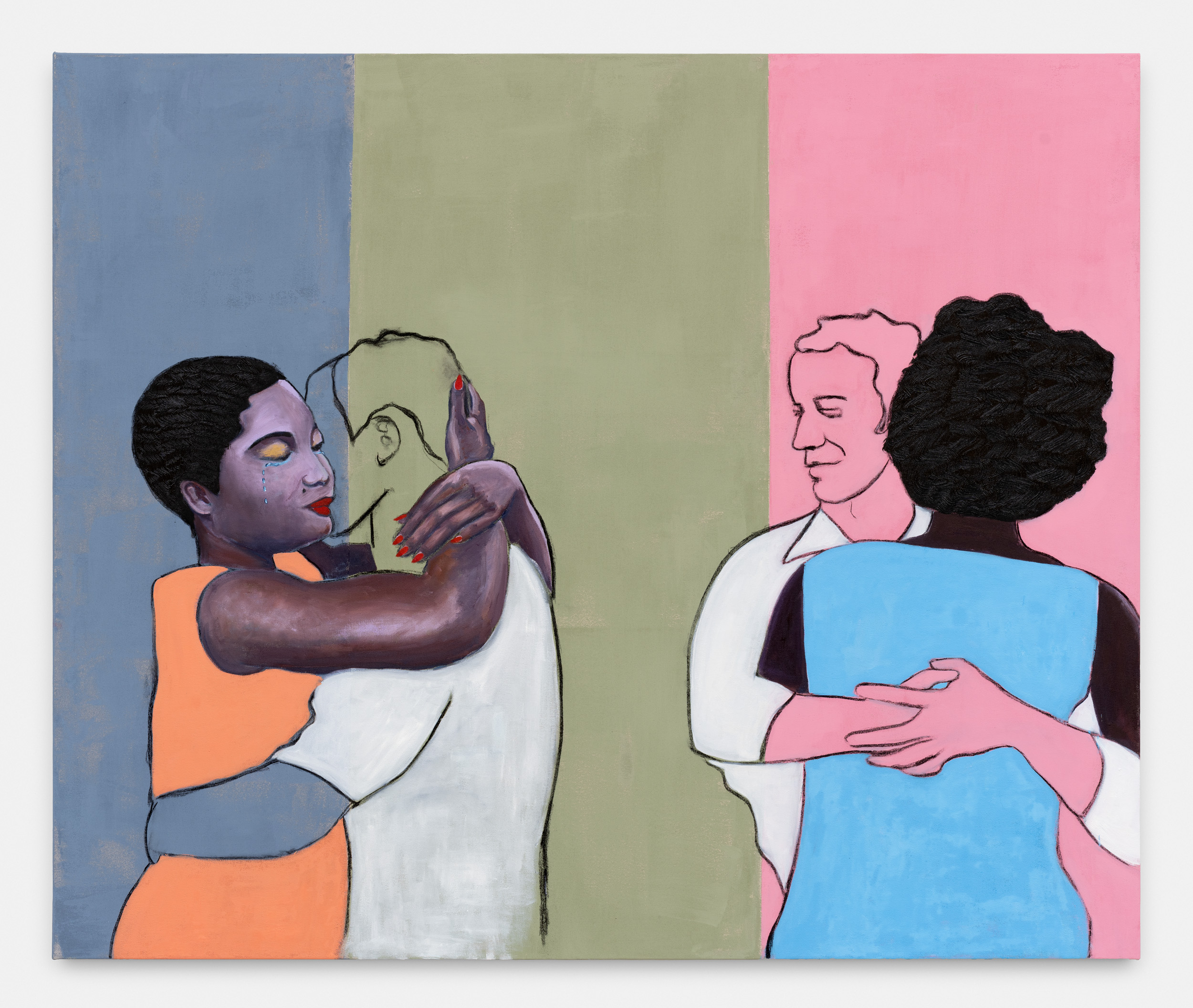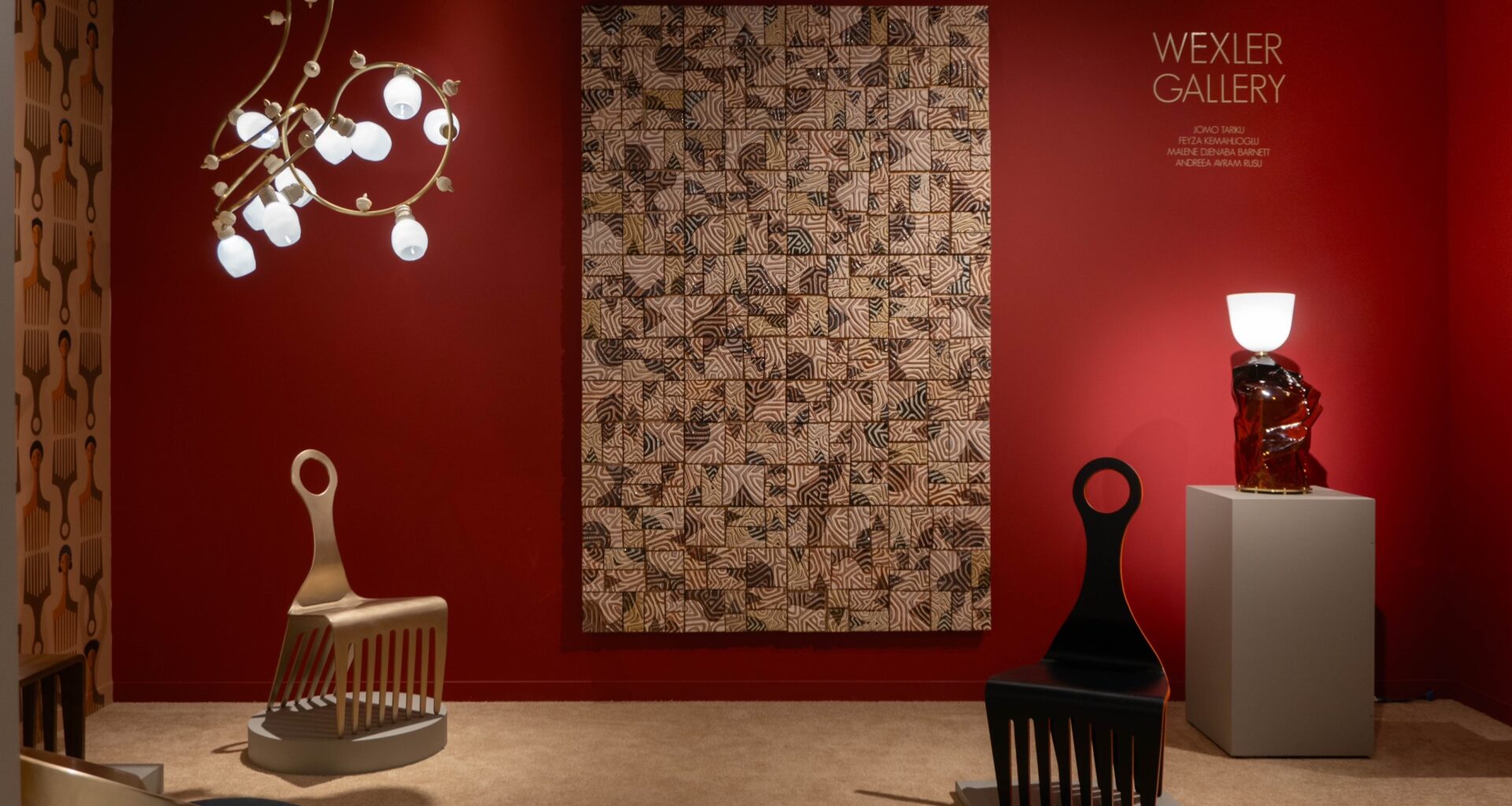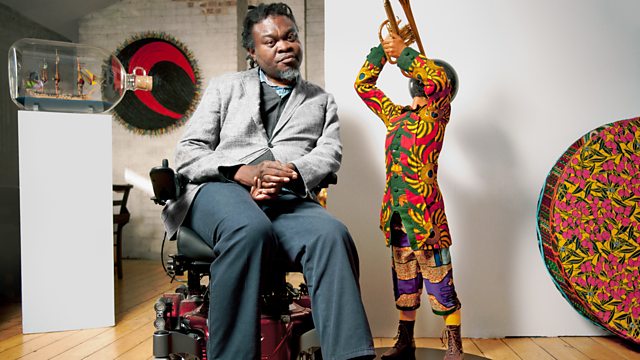Kristina Kay Robinson started a writing career over ten years ago. However, in recent years Robinson liberated herself from the written word, particularly the English language, and created a voice within the visual plane that attempts to transcend traditional verbiage. “I saw the political and social culture in the U.S. getting more and more restrictive, and much more difficult over the last five to seven years; as a writer, that became very burdensome. I felt censored in a way that I hadn’t felt before!” Robinson explains. The New Orleans native found a way to keep from being/feeling censored as a creative within the realm of visual and performance art. Robinson created her environment that interrogates her feelings of surveillance, censorship and the binding limits of language. The gatekeepers of the literary sphere could no longer make boundaries around Robinson’s creative process.
Once she let her visual and performance work takeover, Robinson tapped into a realm of personal power that allowed her to soar and land in a place and space that she calls Republica. Robinson’s project Republica, Temple of Color and Sound, is based on a historical happening of 1811. The German Coast Uprising was the most massive slave revolt in U.S. history. The rebellion took place in Kenner, Louisiana, a suburb of New Orleans. The enslaved Africans’ goal was to conquer the territory of New Orleans that was purchased from France less than a decade earlier. The insurgency sought to claim New Orleans as a free Black republic during a time when the population of African diasporic peoples significantly outnumbered the white ruling class. The uprising was horrifically unsuccessful, resulting in the death of hundreds of enslaved Africans and Free People of Color who fought against U.S. military militias sent to end the insurgency. Robinson’s project is based on a speculative victory. Republica, Temple of Color and Sound is a speculative and critical fabulation of what the free Black republic would look like present day.
Maryam de Capita is a character that Robinson embodies in her performances. Maryam is the most vocal citizen of Republica. Within this free territory, she runs a venue called The Temple of Color and Sound. Robinson refers to the imagined space as a shadow world, a scared and genderless safe area that allows and facilitates a release from restrictive societal norms based on Eurocentric paradigms. During Miami Art Week/ Art Basel 2018, Robinson created temporal manifestations of Republica in various spaces. I was able to experience Republica at AFROFUTURE, a three-day activation that featured Black visual and performance artists, curated by Gia Hamilton, at The Urban, in Miami’s historic African American community of Overtown. In the back of the formal gallery space, Robinson lured viewers/participants to an exhibition within the exhibition, an interactive performance-based installation that she calls “The Temple of Color and Sound.” Immediately I was confronted with the real and robust energy of the place. Vibrations traversed through my body. It was a feeling of comfort met with curiosity. The space appealed to all senses, layered with scents coming from natural roses and frankincense, dark, candlelit voids, and abstracted house music from a DJ soundboard that was operated by the artist, all leading to the large altar in the center of the room, surrounded by dreamlike video projections appearing on the makeshift walls. I was in a temple. Robinson emerged as the character of Maryam de Capita filling the space with what she refers to as Devine Feminine energy. Ms. de Capita is tall and sinewy, with long hair that sometimes covers her face as she moves about, adding to her mystique. Maryam dresses in an eclectic mix of Catholic iconography, necklaces, bracelets, form-fitting and strapless clothing, hosiery, and platformed high heeled shoes. In the shadow world, Robinson weaves in and out of the space with languid movement, continually tending to the soundboard and the altar she has created, while chanting phrases that are both audible and inaudible.
Conceptually, Robinson’s practice is profoundly influenced by Vodou. Enslaved Africans that were brought to the New World came with their indigenous modes of worship, often referred to as a cosmology. These religious systems such as Yoruba and Vodun were combined throughout the diaspora of the New World, creating syncretic religious practices such as Santeria, Candomblé, and Vodou. The practice of Vodou was brought to the United States to New Orleans by free and enslaved Africans of Hatti. Like many citizens of New Orleans, Robinson is a descendant of Haitian Creole ancestry. Marie Catherine Laveau is perhaps the most prominent figure within the history of Voodoo (American spelling) in the United States. She was a devout practicing Catholic but also practiced root-work, conjure, Native American and African spiritualism, establishing the American syncretic iteration of Vodun called Voodoo.
“Maryam de Capita is multifaceted and wants to accommodate the need for the sacred, the need for the secular and the profane. The altar work I do is to of visualizing this idea of materializing both the sacred and the profane. Maryam is a person that is an embodiment of the shadows that we all have, the things that may cause us shame. Maryam allows us to bring our shadows to the temple, letting us know that everything is fine, everything is okay,” explains Robinson. The artist evokes the power of sound, scent, and sight in her performances. Robinson considers the embodiment of Maryam to be both tangible and intangible, an embodiment of the artist’s shadows. When Robinson performs as Maryam, she acknowledges the ethereal nature of the character’s spirit, allowing her to take over as a spiritual possession or mounting.
Frankincense and rose always fill the space that Maryam de Capita inhabits. “In the ancient world frankincense was more valuable than gold, due to its rarity. Rose is associated with the Devine Feminine, and the Virgin Mary as a deity, so I ground the space with those two scents because of their ancient and historical powers”. The constructed altar/shrine is central to the installations. Objects a varying depths and heights lead the eye through a composition that cannot be carelessly visually navigated.
The viewing process is slowed down as familiar objects of nostalgia such as candles, religious figurines, flowers, lace fans, West African Ashanti fertility sculptures, textiles, crystals, beads, rosaries, tarot and playing cards, sacred books, feathers, and a myriad of found objects that are all charged with meaning. Robins also constructs soundscapes within her installations, considering the different individual feelings and collective cultural memories that come from using sound as a medium. The artist uses a microphone as she chants and is strongly influenced by hip-hop, and how DJs and MCs control the mood and the ambient experience of spaces. Essentially the installation facilitates a party that leads to a form of worship. “The altars and shrines are physical manifestations of the ethereal realm,” Robinson stated. “What you want to be manifested in the physical, or how you understand the spiritual, is what you use to build and create an altar or shrine. It becomes and an anchored and tangible manifestation of desires that surpass language. Conceptually that is what magic is, manifesting intangible desires into the physical”.
Robinson credits African American artist Bettye Saar, known for assemblage compositions, and Korean video artist Nam June Paik as major influencers to her work. “Saar’s work let me know that I could be different as an artist and create a lane for myself. I can use nontraditional mediums like Saar did to make compositions and it would still be considered art,” said Robinson. The artist also considers the performances of Josephine Baker to highly influential to her practice. “Josephine wasn’t afraid to use her feminine power to insight change and be an activist against racism and equality.”
An exciting element of Robinson work is its mobility and fluidity. The work is not static nor stagnant; no two installations are the same. Robinson feels that the sacred artistic practice of her work as well as the monetization, and commercial viewing of it is a part of the history of New Orleans. Indigenous spiritual traditions take place in open squares within the French Quarter and are often done commercially for spectators. The work can be viewed and experienced in the traditional museum and gallery space, as well as in the backyard of someone’s home, lending to notions that Republic, Temple of Color and Sound is a state of mind.
Kristina Kay Robinson is based in New Orleans and will be creating an extensive manifestation of the temple in New Orleans and West Africa in 2019.







